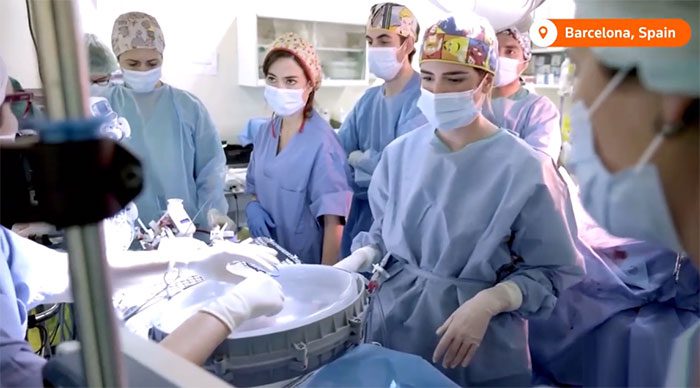Experts are striving to develop artificial wombs for babies born extremely preterm after successful trials on animals.
Spanish researchers developing an artificial womb. (Video: Reuters).
In the experiment, a prototype artificial placenta created a protective environment using a transparent container made from biocompatible materials, Reuters reported on June 30. Inside, the lungs, intestines, and brain of the fetus were able to continue developing. The container connects to a system for amniotic fluid circulation, keeping the fetus isolated from external stimuli while still allowing for monitoring and ultrasound control.
Babies born just six months into pregnancy or less are considered extremely preterm and face a high risk of mortality or disabilities. The World Health Organization (WHO) reported that approximately 900,000 such newborns died worldwide in 2019.
“We are working to develop a system that allows a fetus to be maintained outside the mother’s body while still in conditions similar to the womb, continuing to breathe through the umbilical cord, feeding through the umbilical cord, and surrounded by a fluid at a stable temperature,” said project leader Eduard Gratacos. He heads a team of 35 from the BCNatal medical research center and the Fundacion La Caixa organization.

System to keep the fetus outside the mother’s body.
The team conducted preclinical studies on lambs, successfully keeping a living fetus for 12 days. They also plan to test with pigs before proposing human trials in the coming years.
“The project is very complex, involving various medical disciplines and requiring engineers from multiple fields. It’s a significant challenge and will be extremely complicated to trick nature and make this feasible”, Gratacos stated.
Kelly Werner, an associate professor of pediatrics at Columbia University, believes that the promising results from the Spanish team must undergo rigorous testing in human clinical trials to assess safety and potential side effects. “This is an exciting development, but the artificial placenta is not intended to replace the natural placenta. Despite such advancements, we should continue to do our utmost to support maternal health and reduce risk factors that lead to preterm birth,” Werner commented.




















































